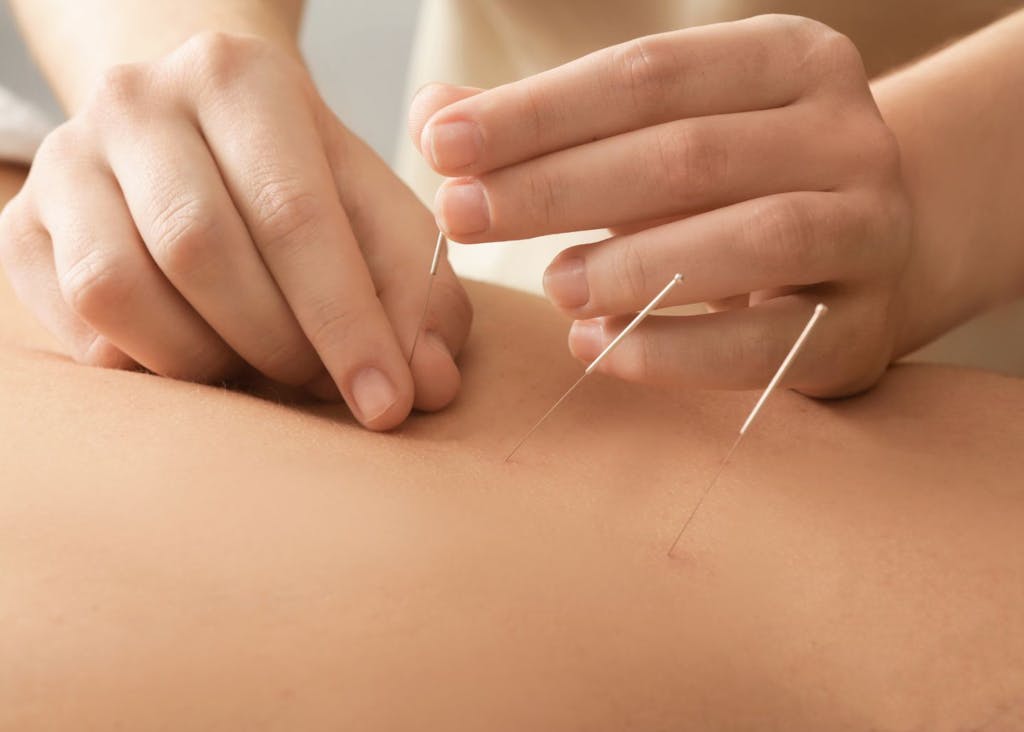Acupuncture
What is acupuncture?
Acupuncture is just one branch of Chinese Medicine that originated in China close to 5000 years ago. It is a complete system with its own diagnostic tools aimed to naturally promote health, prevent illness and treat injury and diseases. Acupuncture involves placement of hair thin needles into carefully selected points called acupuncture points on the body to achieve the desired effect.

How does it work?
There are two explanations: the Traditional Chinese Medicine (TCM) perspective and scientific explanation.
TRADITIONAL CHINESE MEDICINE EXPLANATION
In TCM the body is seen as a delicate balance of two opposing but inseparable forces of Yin and Yang. In addition, there is a belief that there are channels/meridians in the body where there is a flow of Qi/energy and which comprises a complex energetic/electrical circuit. Health is achieved as long as the two forces of Yin and Yang are kept in a “balanced state” and there is no disturbance in the flow of Qi.The Western interpretation of Chinese concepts of meridians/channel system where there is a circulation of Qi/energy/Life force has been misunderstood as esoteric, paranormal and unscientific. However, further analysis showed that the pathways that were mapped out by early Chinese doctors correspond to blood and lymph vessels, central and peripheral nervous systems, myofascial distribution, neurovascular nodes, neuromuscular attachments and motor points.
SCIENTIFIC EXPLANATION
The procedure of acupuncture involves the insertion of needles to create lesions/tissue irritation in the soft tissue (acu-puncture). The needles and the created micro-trauma in the tissue triggers a complex localized (peripheral) and non-localized reaction (central), which is a built in survival mechanism that promotes homeostasis and self-healing.In central mechanism, needle induced trauma in the tissue stimulates parts of the brain that activate the principal survival/healing systems such as nervous, endocrine, immune and cardiovascular, which normalize the physiological activities of the whole body.
In peripheral mechanism needling triggers a physiological reaction around the needled site. The induced inflammation promotes immune, neuroendocrine and cardiovascular reactions. These reactions desensitize painful nerves and repair damaged tissue. The healing process of the tissue is triggered as soon as a needle is placed into the body.
With that knowledge, acupuncture can be defined as a physiological therapy coordinated by the brain, which responds to the stimulation of manual needling of peripheral sensory nerves. Acupuncture normalizes physiological homeostasis and promotes self-healing. That is why it is often said that acupuncture does not just treat symptoms but treats body as a whole – at the root and symptomatic level. This explains why patients sometimes come to get treated for one specific complaint (ex. ankle pain), but end up feeling better overall, feel improvements in digestion, sleep and other symptoms unrelated to the main complaint.
In treatment of internal disorders such as stomach ache, we cannot directly put needles into the stomach tissue to induce a needle reaction; for internal disorders segmental nerves are needled to initiate cutaneo visceral reflex (dermatomes, myotomes, sclerotomes), which creates a balance between sympathetic and parasympathetic nerves to promote self-healing in the stomach. This is an indirect treatment by acupuncture.
Trigger point needling deactivates trigger points by getting a twitch response with a needle, which restores healthy tissue and alleviates pain.
Modern knowledge does not contradict main principles of Oriental medicine:
- Restoring physiological homeostasis – regulates sympathetic and parasympathetic systems – yin and yang.
- Maximizes self-healing without side-effects
- Treating both the root and symptoms of the disease – treats the whole body.
Does one need to believe in acupuncture for it to work?
No! Acupuncture has been shown to be very effective in treatment of animals, who do not have a concept of belief.
What conditions can acupuncture help?
Head injuries, headaches, neck/cervical spine issues, shoulder/upper arm issues/rotator cuff tendonitis/bursitis, tennis elbow, golfer’s elbow, wrist pain/carpal tunnel syndrome, any back issues, groin strain, hamstring strain, piriformis syndrome, IT band syndrome, knee pain/injuries, calf strain, ankle sprain, plantar fasciitis, stress related aggravation of symptoms, internal complaints.
